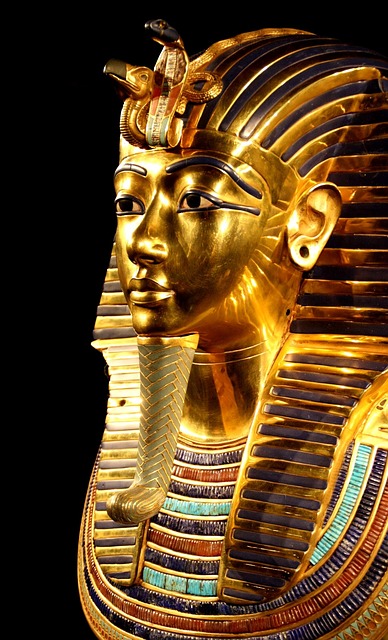401(k) plans have specific rollover options that allow for the conversion into a Gold or Silver IRA. Before proceeding, it's crucial to verify if your plan permits such transfers, as not all do. If rollovers are available, you can opt for a direct transfer to a new Gold or Silver IRA custodian or an indirect rollover involving a 60-day deposit into a self-directed IRA that accepts precious metals, provided your plan supports in-service withdrawals. It's imperative to adhere to IRS guidelines and manage the process through a reliable custodian experienced with precious metals IRAs to ensure compliance, security, and proper handling of investment types like American Eagle and Buffalo bullion coins that meet IRS purity standards. The conversion can protect your retirement savings against inflation and economic volatility by diversifying into tangible assets. Always confirm the custodian's membership in professional organizations for additional assurance of their expertise and commitment to best practices. After setting up a compliant self-directed IRA, you can proceed with the rollover to invest your 401(k) savings in physical gold and silver, ensuring a diversified investment strategy within the framework of an IRA. Regular management and oversight are necessary to maintain compliance and meet your retirement goals.
Exploring the transformation of your retirement savings into tangible wealth, our article delves into the process of converting a 401(k) to physical gold and silver. This financial maneuver entails a strategic series of steps, beginning with ascertaining the permissibility of rollovers within your 401(k) plan. Should your plan be amenable or should you have transitioned from your employment, you gain the opportunity to initiate this unique investment strategy. Subsequent sections will guide you through understanding the nuances of rolling over to a Gold and Silver IRA, selecting a reputable custodian for your precious metals, and navigating the rollover process with precision. Additionally, we’ll cover the essentials of managing your tangible holdings post-rollover to ensure your investment portfolio is both diverse and secure.
- Assessing 401(k) Rollover Eligibility
- Understanding Rollover Options to Gold and Silver IRAs
- Finding a Trustworthy Precious Metals IRA Custodian
- Completing the Rollover Process from 401(k) to Gold/Silver IRA
- Managing Your Physical Gold and Silver Holdings within an I
Assessing 401(k) Rollover Eligibility

Before embarking on the process of converting your 401(k) into physical gold and silver, it is necessary to determine your plan’s rollover eligibility. Not all 401(k) plans permit such rollovers; thus, it is crucial to consult with your plan provider or review your plan documentation. The Employee Retirement Income Security Act (ERISA) sets guidelines for plan administrators regarding the types of distributions available, which typically include rolling over to an Individual Retirement Account (IRA), another employer-sponsored retirement plan, or taking a lump-sum distribution subject to taxes and penalties. If your plan allows for rollovers, you have the option to perform an indirect rollover by having the funds sent directly to you, which you then have 60 days to deposit into a self-directed IRA that accepts precious metals. Alternatively, if your plan supports in-service withdrawals, you can transfer a portion of your 401(k) to such an account without triggering the distribution rules. It is imperative to understand the specific rules and regulations that govern your 401(k) plan to ensure compliance with IRS guidelines and avoid any unnecessary taxes or penalties during this transition.
Understanding Rollover Options to Gold and Silver IRAs

When considering the conversion of your 401(k) to physical gold and silver, it’s crucial to explore the rollover options available to you, particularly those involving Gold and Silver Individual Retirement Accounts (IRAs). These specialized IRAs allow for the acquisition and ownership of precious metals as part of your retirement portfolio. The first step in this process is to ascertain the rules and regulations governing your 401(k) plan. Not all plans permit rollovers, so it’s essential to review your plan documentation or consult with your plan administrator. If your plan does allow for rollovers, you have two primary options: a direct rollover to another employer-sponsored retirement plan if you’ve changed jobs, or a 60-day rollover, which can be used if your plan permits in-service withdrawals.
For a direct rollover, you would instruct your former employer’s plan custodian to transfer the funds directly to the custodian of your new Gold or Silver IRA. This method avoids any tax implications as the funds are moved directly from one account to another. If your plan supports in-service withdrawals, you can initiate a 60-day rollover by withdrawing the funds yourself and then depositing them into your new Gold or Silver IRA within two months. However, it’s imperative to manage this process meticulously to avoid tax penalties, as failure to deposit the funds within the specified timeframe can result in the rollover being treated as a taxable distribution. Once the rollover is complete, you gain the benefits of diversifying your retirement savings with tangible assets—gold and silver—which have historically acted as hedges against inflation and economic uncertainty. This move can be a strategic addition to your investment strategy, providing a physical asset component to your portfolio.
Finding a Trustworthy Precious Metals IRA Custodian

When contemplating the conversion of your 401(k) to physical gold and silver, a key step is identifying a trustworthy precious metals IRA custodian. This custodian will handle the transactions and ensure that the precious metals adhere to IRS regulations. It’s imperative to conduct thorough research to select an IRS-approved custodian with a proven track record of managing such accounts. Look for custodians who specialize in precious metals IRAs, as they possess expertise and resources necessary to facilitate the process smoothly. They should be well-versed in the types of gold and silver that are permissible under IRS guidelines, which typically include American Eagle bullion coins, American Buffalo bullion coins, certain American Gold Eagles, and other similar government minted products, as well as certain gold, silver, platinum, and palladium bars meeting certain fineness requirements. Ensure the custodian is transparent about their fees and has robust security measures in place to protect your investment. Verifying their credentials, such as being a member of the Business Administration (CBA) or Certified IRA Services (CIIS) organizations, can provide additional assurance of their reliability and professionalism. By carefully selecting a reputable custodian, you set a solid foundation for successfully transitioning your retirement savings into a physical gold and silver investment within an IRA framework.
Completing the Rollover Process from 401(k) to Gold/Silver IRA

Once you’ve confirmed that your 401(k) plan permits rollovers, the process of converting your retirement savings into a Gold or Silver IRA can begin. The first step is to choose a trustworthy custodian specializing in precious metals IRAs. This custodian will facilitate the transaction and ensure that the purchase of gold and silver adheres to IRS regulations. You’ll need to open a new self-directed IRA account with this custodian, selecting the type of precious metals you wish to invest in—commonly, gold and silver bullion, coins, and bars that meet the IRS’s purity standards.
Next, you must initiate the rollover process by requesting a direct transfer from your existing 401(k) plan to your new Gold or Silver IRA. This is done by completing the necessary paperwork with both your current 401(k) plan administrator and the new custodian. It’s crucial to handle this transaction as a direct rollover to avoid tax implications; the funds should be sent directly from one financial institution to another, rather than being distributed to you personally. Your new custodian will provide instructions on how much of the transfer they can accept based on IRS rules regarding the type and amount of precious metals that can be held within an IRA. Once the rollover is complete, your 401(k) funds will be converted into physical gold and silver, and you’ll have a new investment strategy within the framework of a self-directed IRA.
Managing Your Physical Gold and Silver Holdings within an I

When contemplating the conversion of your 401(k) into physical gold and silver holdings, it is imperative to ensure that your plan permits rollovers to a self-directed IRA, which will be the vehicle for your precious metals investment. This step is non-negotiable as it is the legal framework within which your assets can be transferred without incurring penalties or taxes. Once you have confirmed that your plan supports such transactions, and after deciding to roll over your funds, you must establish a self-directed IRA that allows for physical precious metals. The selection of a reputable custodian is crucial; this entity will facilitate the purchase, storage, and management of your gold and silver holdings within the confines of the I. It is the custodian’s role to ensure compliance with IRS regulations, safeguard your investments, and provide detailed account services. Upon establishing your self-directed IRA and selecting a custodian, you can proceed with the purchase of compliant precious metals. These must meet specific fineness requirements set forth by the IRS—typically, gold must be 99.5% pure or higher, while silver should be 99.9% pure or higher. The custodian will arrange for the storage and insurance of your holdings, providing you with a secure and compliant way to diversify your retirement portfolio with tangible assets. Regularly reviewing and managing your physical gold and silver holdings is essential to ensure they remain within the allowable parameters of your I and that their value aligns with your investment strategy and retirement goals. This ongoing oversight will help safeguard your investments and contribute to a sound financial future.
In conclusion, transitioning your 401(k) into physical gold and silver through a self-directed IRA is a strategic move that requires careful consideration of eligibility, understanding the rollover options available, selecting a reputable precious metals IRA custodian, and diligently managing your new holdings. By adhering to these steps, you can effectively diversify your retirement portfolio with tangible assets. It’s prudent to consult with a financial advisor to ensure this approach aligns with your long-term investment goals and retirement strategy. With the right guidance and due diligence, you can secure your financial future with precious metals within the framework of an IRA.
